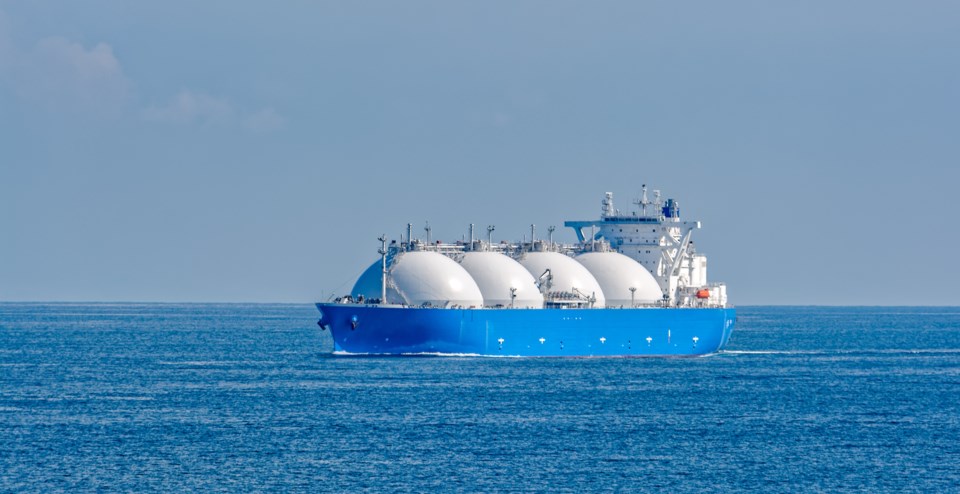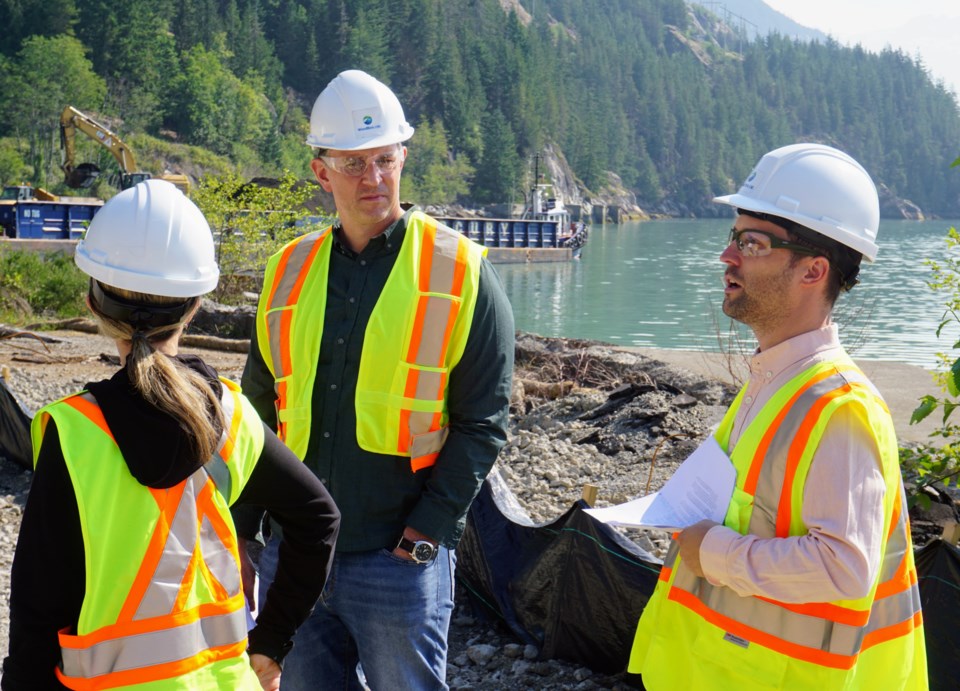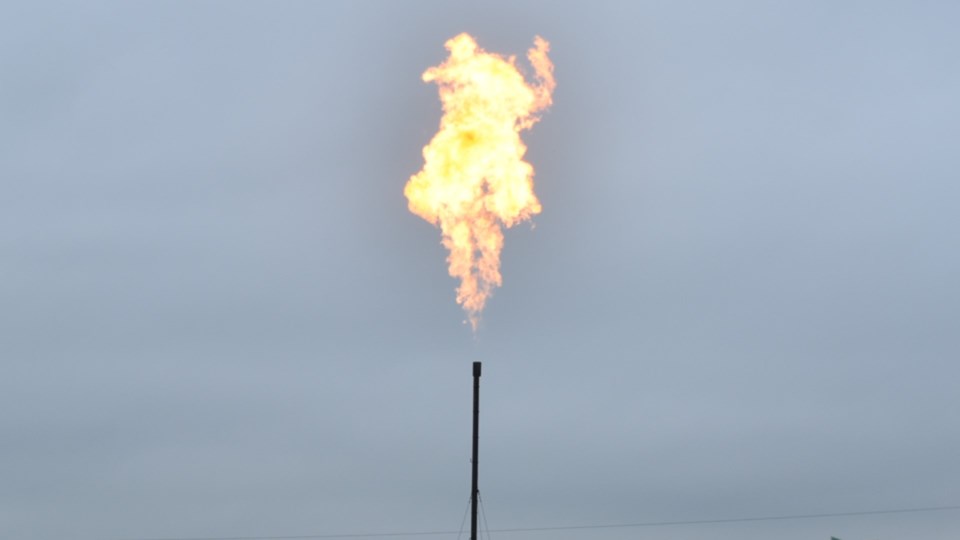A group of scientists have launched a two-year study looking at how flaring at a natural gas export terminal slated to be built near Squamish, B.C., could affect the health of people across the region.
The look into how much air pollution Woodfibre LNG could emit will begin outside Canada. Backed with funding from the federal government, researchers will draw on more than a decade of satellite data measuring air pollution at similar liquefied natural gas (LNG) export terminals across the world. They will then compare that number with emissions industry said it released.
“We've seen that in some cases, more flaring has occurred than what the proponents were saying,” said Laura Minet, an assistant professor in civil engineering at the University of Victoria.
Gas flaring at LNG export facilities occurs by burning excess methane — the main component of natural gas — as it’s processed into a liquid for transport overseas. According to Woodfibre LNG, flaring can occur at high and low pressures during the course of maintenance, testing, ship loading and emergencies.

Minet, who is leading the project, said that at some LNG facilities built in the U.S. and Australia over the last decade, outside observers have seen a big gap in flaring-related air pollution reported by industry and what was measured on the ground. But no systematic analysis has ever captured the full scope of what is happening.
While the number of new LNG export facilities has spiked in the past decade, so too has scientists' understanding of how flaring affects human health.
“The fact is, if there's population close to flaring, and flaring that appears very often, we can highly suspect health impacts on the population,” said Minet.
Environmental studies backed by Woodfibre’s proponents 10 years ago showed limited exposure within a 10-kilometre radius of the facility, said the UVic researcher.
But Squamish is much closer to the Woodfibre project site than others built in Australia and the U.S., and with a temperature inversion in the region, pollutants could be forced to the ground and travel much further, Minet said.
Modelling flaring pollution near B.C.'s largest urban centre
Pollutants from flaring in the Squamish region could theoretically extend to the entire Salish Sea, according to Tim Takaro, a physician and researcher at Simon Fraser University.
“Sometimes the air mass will extend all the way to Vancouver and you know, the whole basin. And sometimes it's more limited,” said Takaro, who will assess flaring’s potential impact on human health.
“It really depends on the weather.”
The satellite emissions data from LNG facilities already built outside of B.C. will help the researchers get a better idea on how pollution from flaring could spread around Howe Sound.

In a second phase of the study, modelling experts from Texas A&M and the University of Toronto will project the dispersion of a number of pollutants from Woodfibre LNG, including fine particulate matter (PM2.5), nitrous oxides and ozone.
Takaro said there’s already evidence flaring can impact birthweight and infant mortality. He said they will also provide best- and worse-case scenarios on how chronic exposure to the pollutants could impact rates of asthma and premature death.
“We want to break through the industry deception and get a real number,” Takaro said, noting “widely reported” gaps in pollution levels seen in U.S. jurisdictions that host LNG export facilities.
Takaro also pointed to a recent study that found levels of air pollutants over the Alberta oil sands were more than 6,300 times higher than industry reported.
Regulatory process showed 'no significant impact to local air quality': Woodfibre LNG
Sean Beardow, a spokesperson for the project, said “Woodfibre LNG is designed to minimize the need for flaring and will only flare in emergency situations or during certain maintenance procedures.”
“During the regulatory process, it was determined that there would be no significant impact to local air quality due to the operation of the Woodfibre LNG facility,” he added.
Both Minet and Takaro said the regulatory approvals for the project used normal operating conditions as a baseline for flaring pollution. Their analysis will take a deeper look at the first year of operation, which tends to lead to a spike in pollution, as well as emissions when the facility is serviced.
“Estimates of the emissions do seem to vary quite widely,” said Michael Schwandt, a medical health officer with Vancouver Coastal Health.
Schwandt said the health authority is collaborating on the study to provide insights into the health of local communities. Should the research come back with warnings to public health, the authority also hopes to roll out protective measures.

Preliminary results on the gap between industry reported and satellite data is expected within a year. Modelling of how flaring pollution could disperse from Woodfibre LNG across the region could come as early as 2026.
That puts the researchers in a race against the Woodfibre’s proponents, who have yet to be granted all their environmental certificates.
A decade after initial environmental approvals were handed to several LNG export facilities in B.C., the scientific research into the health impacts of flaring have advanced, offering a new level of external scrutiny, said the researchers.
Takaro said what they learn on the Woodfibre LNG study will inform several other facilities up for approval as far away as Kitimat, B.C.
“Unlike all the previous projects, we're going to be watching — and they know it,” he said.





